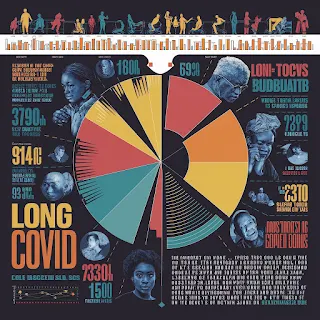Understanding the Risks of Long COVID: A Comprehensive Analysis
Introduction to Long COVID
Long COVID, also known as post-acute sequelae of SARS-CoV-2 infection (PASC), has emerged as a significant public health concern. This condition encompasses a range of symptoms that persist for weeks or months following the acute phase of COVID-19. Understanding the complexities and risks associated with Long COVID is crucial for effective management and treatment.
Symptoms and Health Impact of Long COVID
Persistent Symptoms
Patients with Long COVID report a wide array of symptoms, which can vary significantly in intensity and duration. Commonly reported symptoms include:
- Fatigue: Profound and persistent tiredness that interferes with daily activities.
- Respiratory Issues: Shortness of breath, chest pain, and a persistent cough.
- Neurological Symptoms: Brain fog, memory issues, headaches, and dizziness.
- Cardiovascular Problems: Palpitations, chest pain, and increased heart rate.
- Musculoskeletal Pain: Joint pain, muscle aches, and general weakness.
Psychological and Cognitive Effects
Long COVID can also have a significant psychological impact. Many individuals experience anxiety, depression, and post-traumatic stress disorder (PTSD). Cognitive impairments, often referred to as "brain fog," include difficulties with concentration, memory, and executive function.
Risk Factors for Developing Long COVID
Severity of Initial Infection
The severity of the initial COVID-19 infection is a significant predictor of Long COVID. Individuals who require hospitalization, particularly those admitted to intensive care units (ICUs), are at a higher risk.
Demographic Factors
Certain demographic factors have been associated with a higher risk of Long COVID, including:
- Age: Older adults are more likely to experience prolonged symptoms.
- Gender: Women appear to be at a higher risk than men.
- Pre-existing Conditions: Individuals with comorbidities such as diabetes, hypertension, and chronic lung disease are more susceptible.
Pathophysiology of Long COVID
Immune System Dysfunction
Long COVID may be linked to prolonged immune system activation. Persistent inflammation and autoimmune responses can damage tissues and organs, leading to chronic symptoms.
Viral Persistence
There is ongoing research into whether fragments of the SARS-CoV-2 virus remain in the body, continuing to trigger an immune response long after the acute infection has resolved.
Organ Damage
COVID-19 can cause damage to multiple organs, including the lungs, heart, and brain. This damage can result in long-term health problems and chronic symptoms.
Management and Treatment Strategies
Multidisciplinary Approach
Effective management of Long COVID requires a comprehensive, multidisciplinary approach involving healthcare professionals from various specialties, including pulmonologists, cardiologists, neurologists, and mental health professionals.
Symptomatic Treatment
Management strategies are often symptom-based, focusing on alleviating specific symptoms such as:
- Fatigue: Graded exercise therapy and energy conservation techniques.
- Respiratory Issues: Pulmonary rehabilitation and breathing exercises.
- Neurological Symptoms: Cognitive rehabilitation and mental health support.
- Cardiovascular Problems: Medications to manage heart rate and blood pressure.
Ongoing Research and Clinical Trials
Research into Long COVID is ongoing, with numerous clinical trials exploring potential treatments and interventions. It is essential to stay updated with the latest findings to provide the best care for patients.
Preventive Measures
Vaccination
Vaccination remains a critical tool in reducing the risk of both acute COVID-19 and Long COVID. Vaccinated individuals have a lower incidence of severe illness and prolonged symptoms.
Public Health Guidelines
Adhering to public health measures such as wearing masks, maintaining physical distance, and practicing good hand hygiene can help prevent the spread of COVID-19 and reduce the overall burden of Long COVID.
Conclusion
Long COVID presents a multifaceted challenge that affects a significant portion of individuals recovering from COVID-19. Understanding the symptoms, risk factors, and underlying mechanisms is crucial for developing effective management strategies. Through continued research and a multidisciplinary approach to care, we can improve outcomes for those affected by this persistent condition.
By leveraging detailed analysis and comprehensive insights, this article aims to provide a thorough understanding of Long COVID, helping to raise awareness and improve patient care.



0 Comments